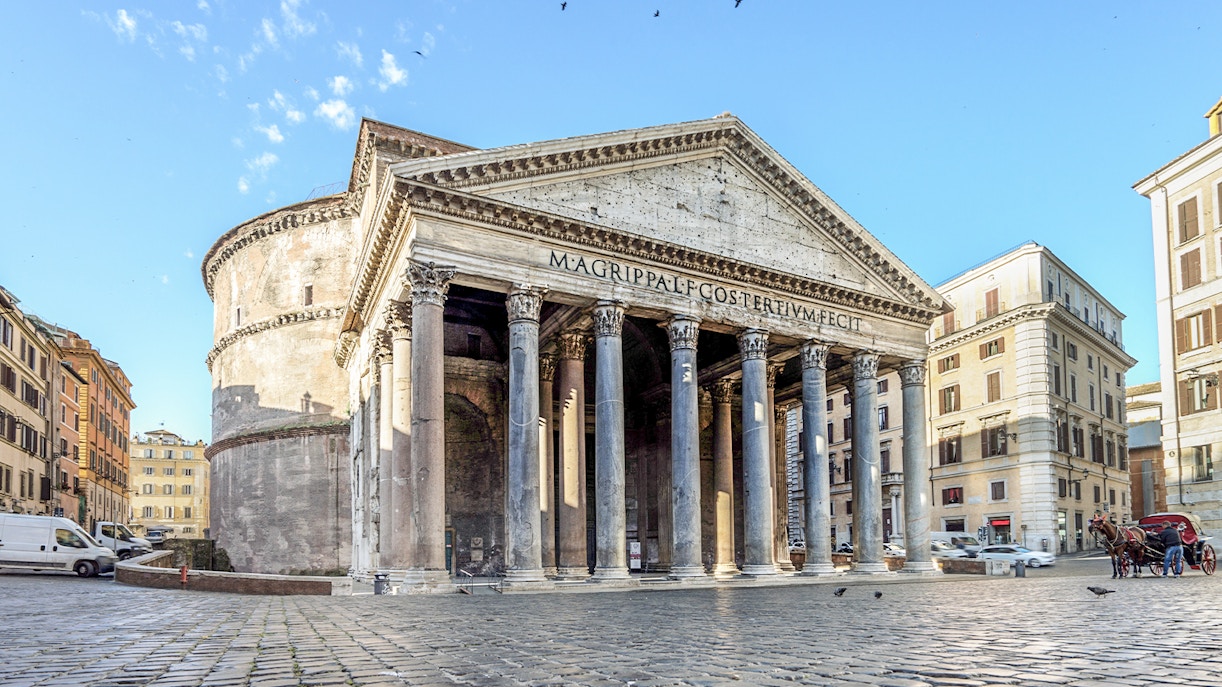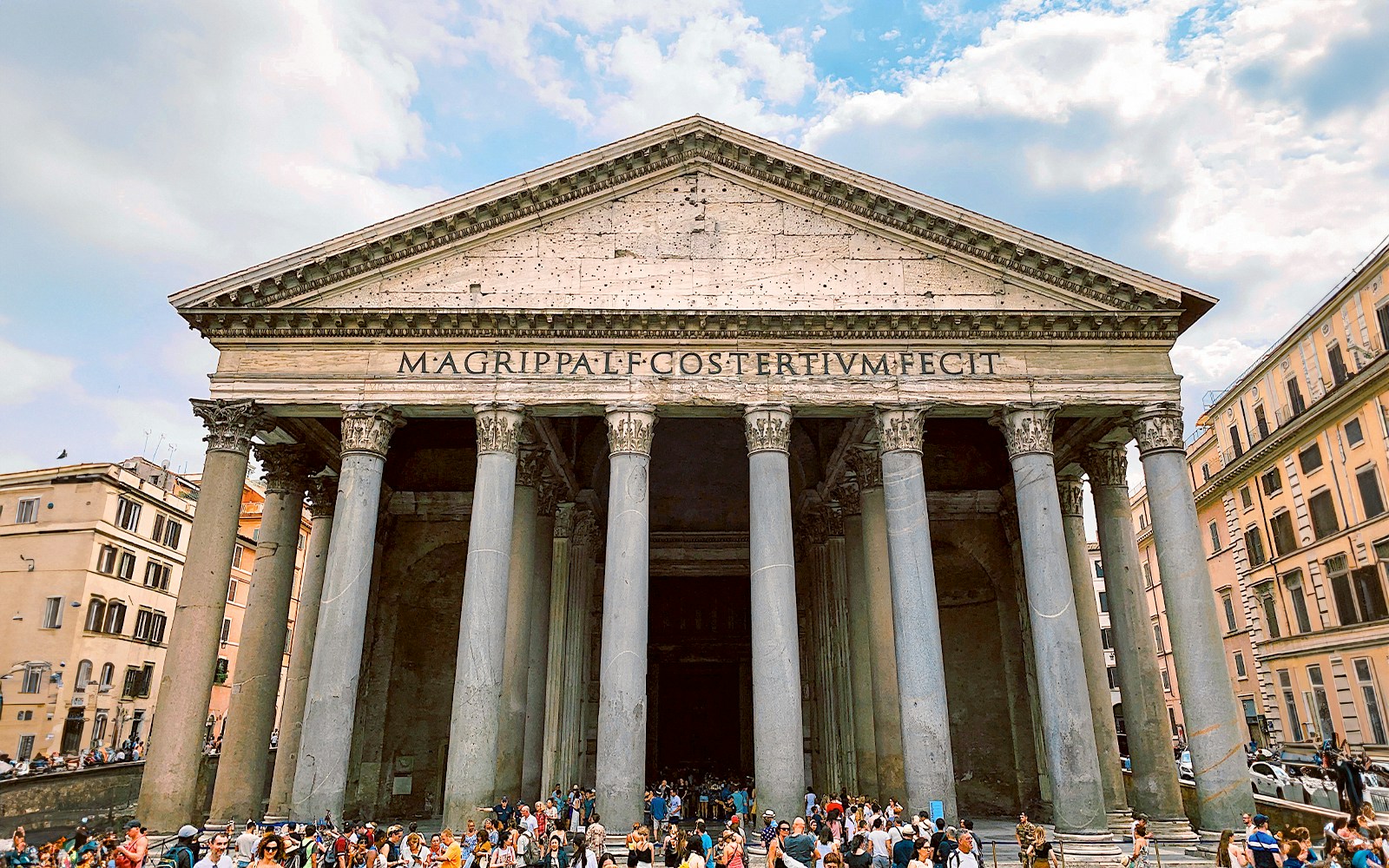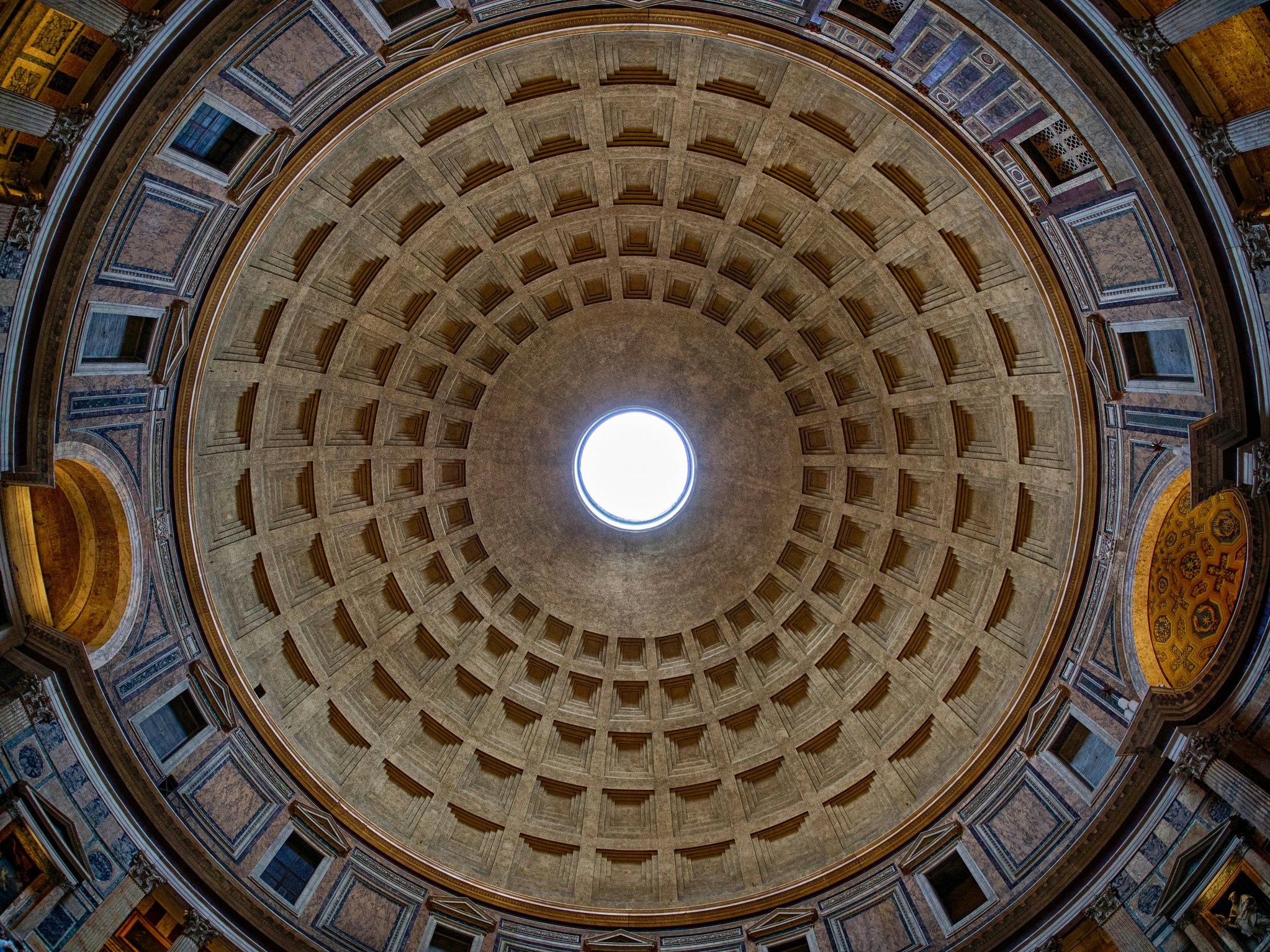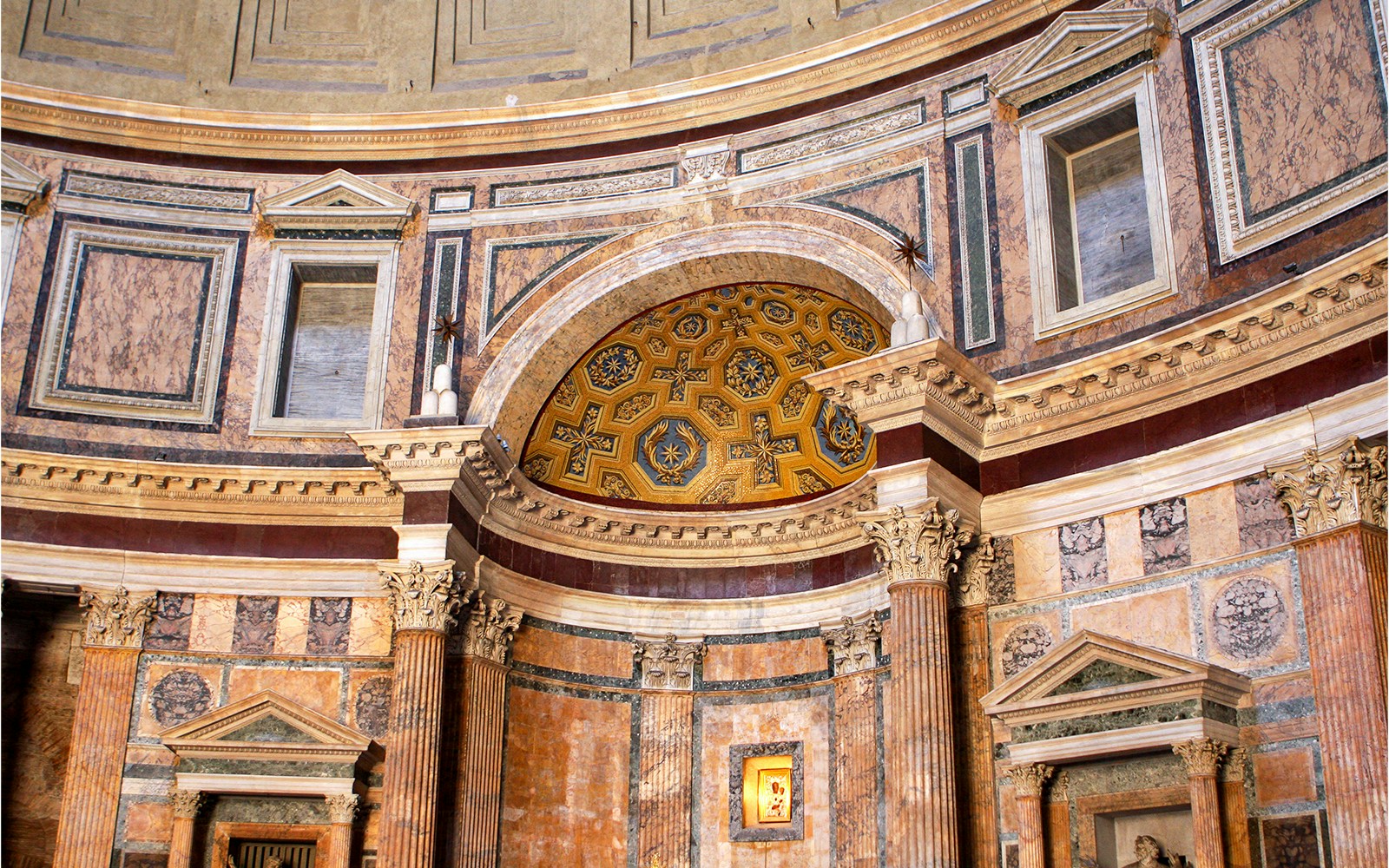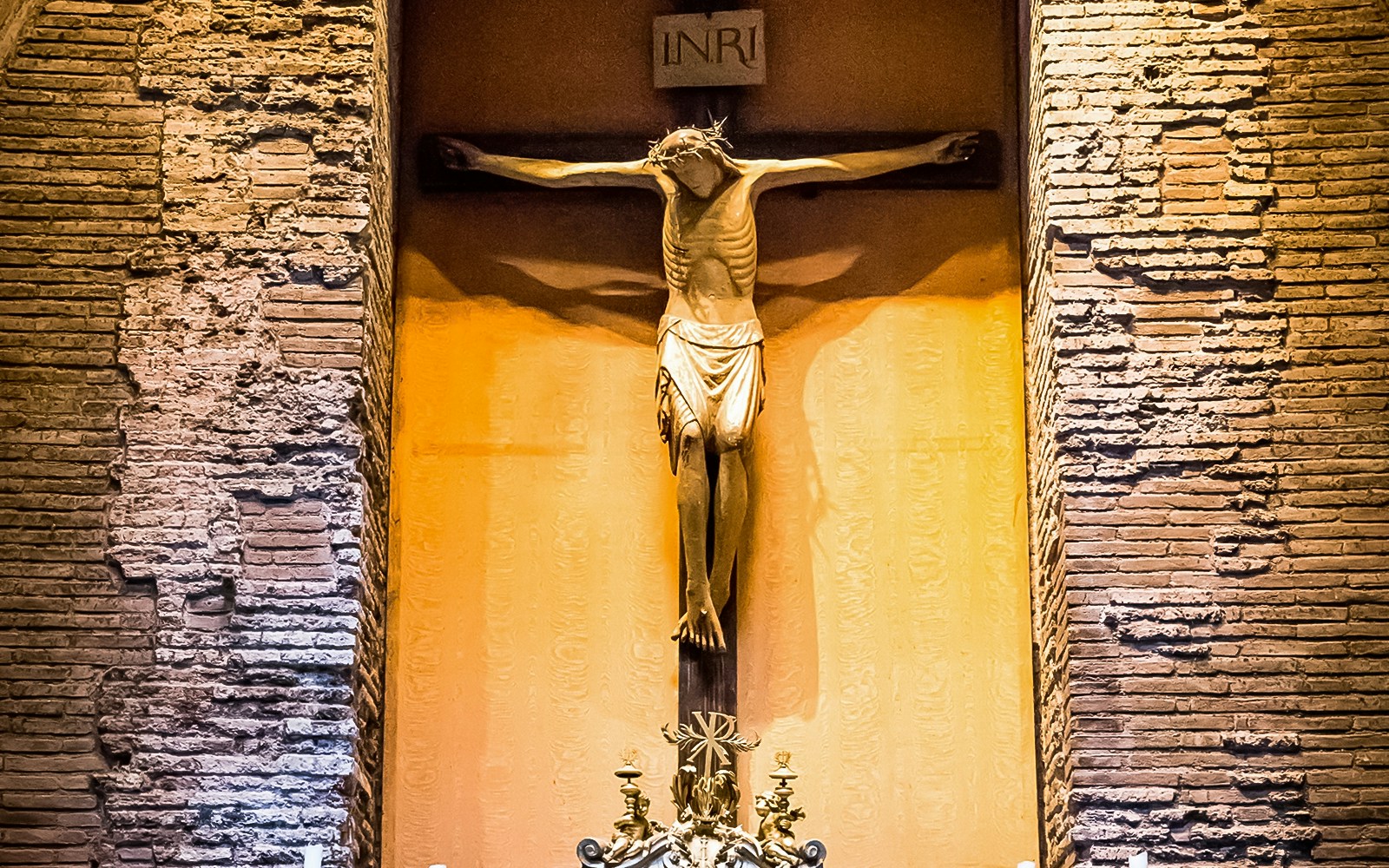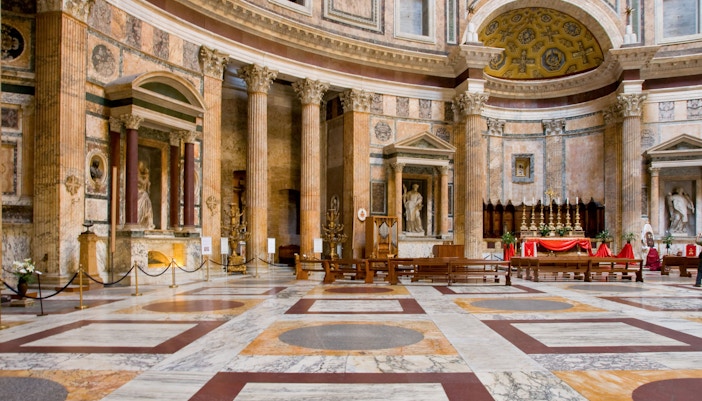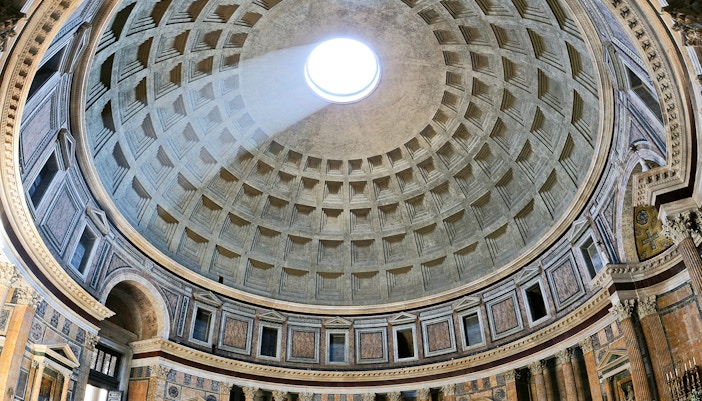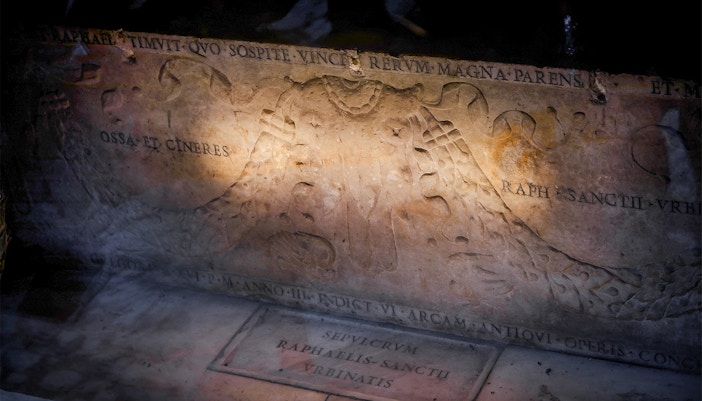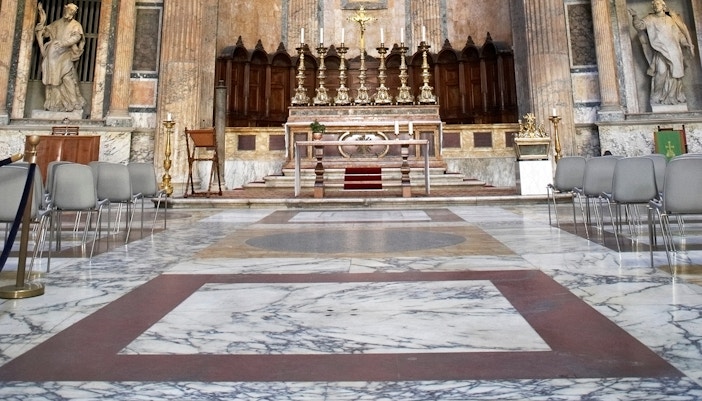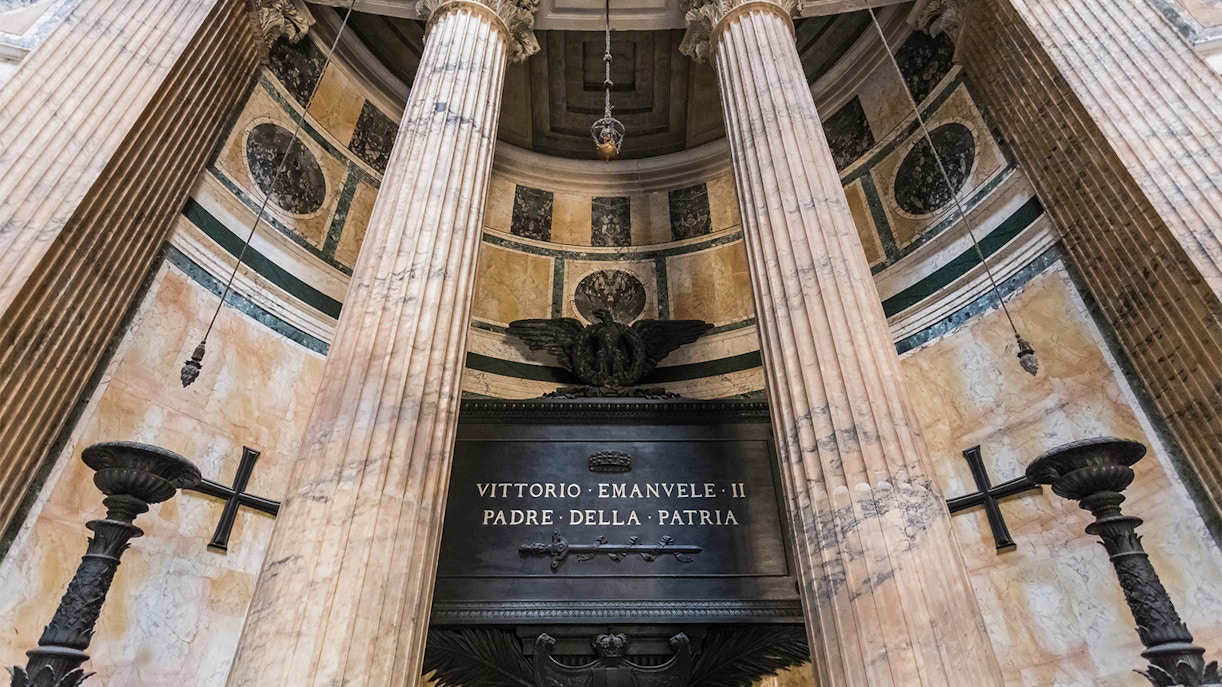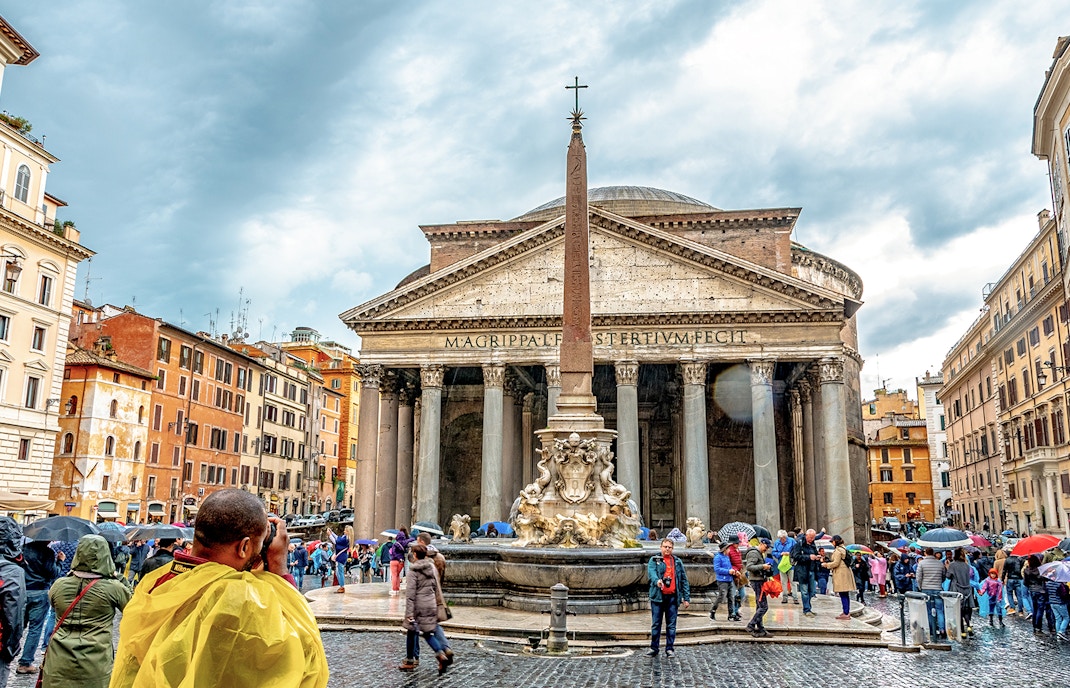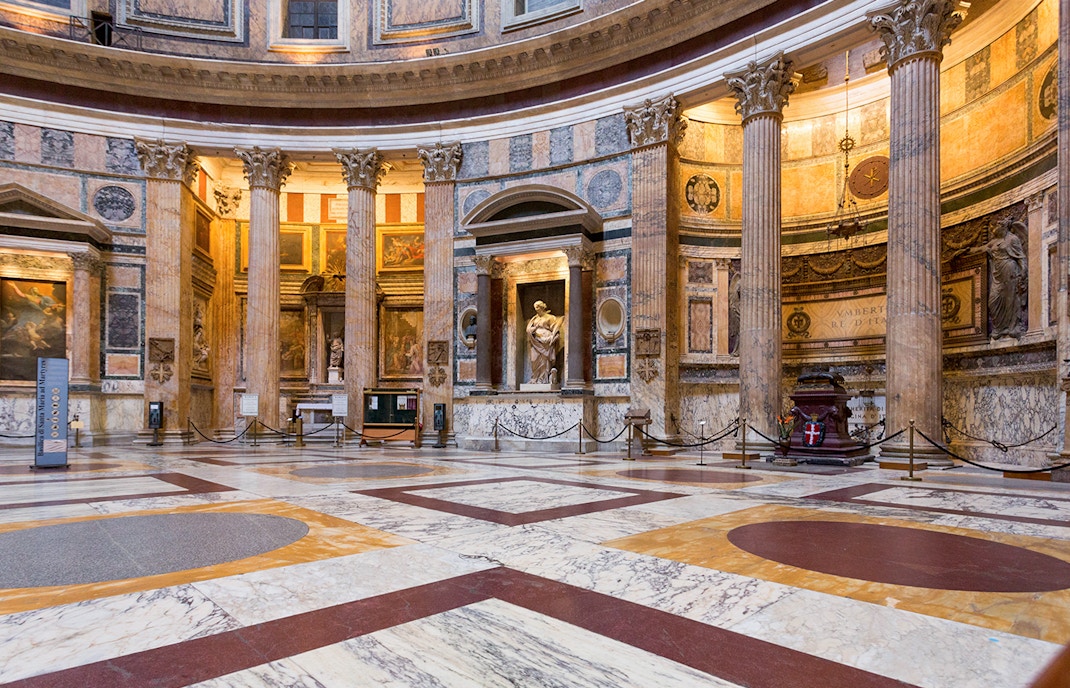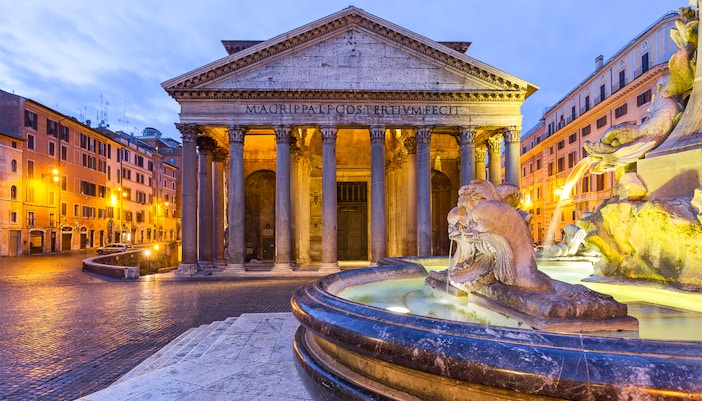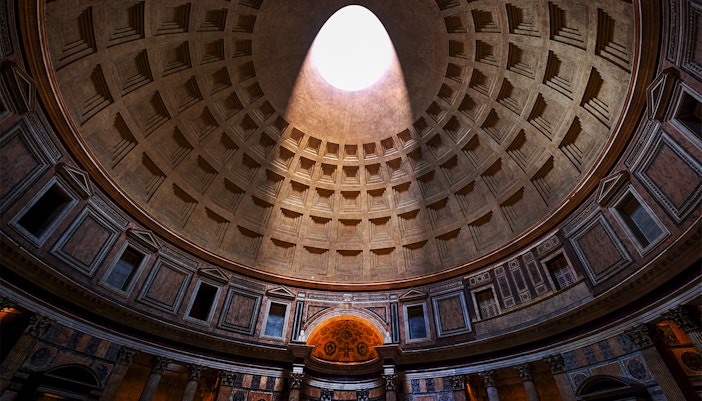The Paris Pantheon, a neoclassical-style building, was originally built as a church in honor of St. Genevieve. Now, however, it is a mausoleum for famous personalities in France including Voltaire, Alexandre Dumas, etc. The Rome Pantheon, in contrast, was originally a temple. Now a functional church, it is still open to the public for mass and other liturgical events. Notable structural differences between the two pantheons include the use of concrete in the Rome Pantheon, and the use of brick and stone in the Paris Pantheon.



